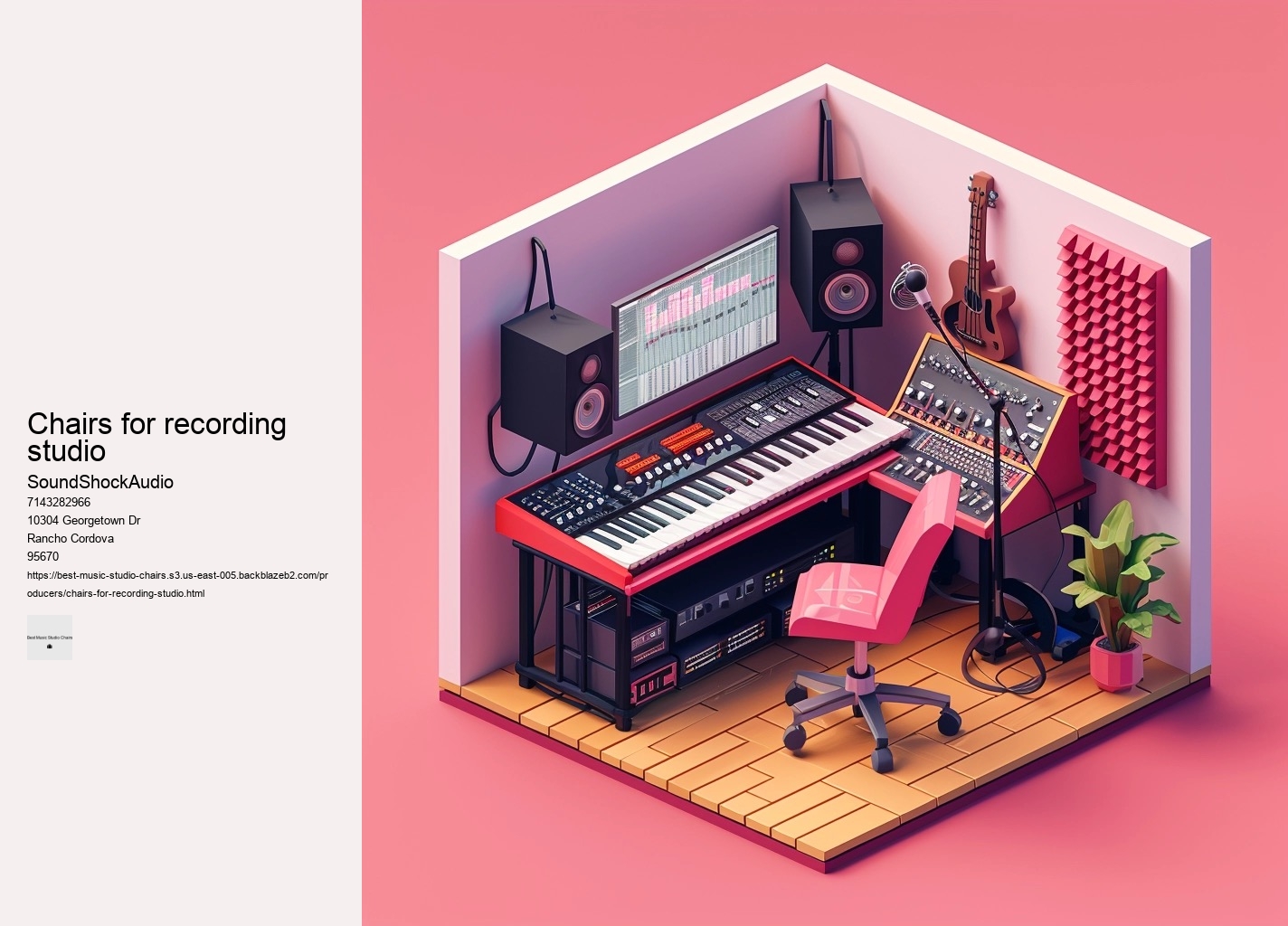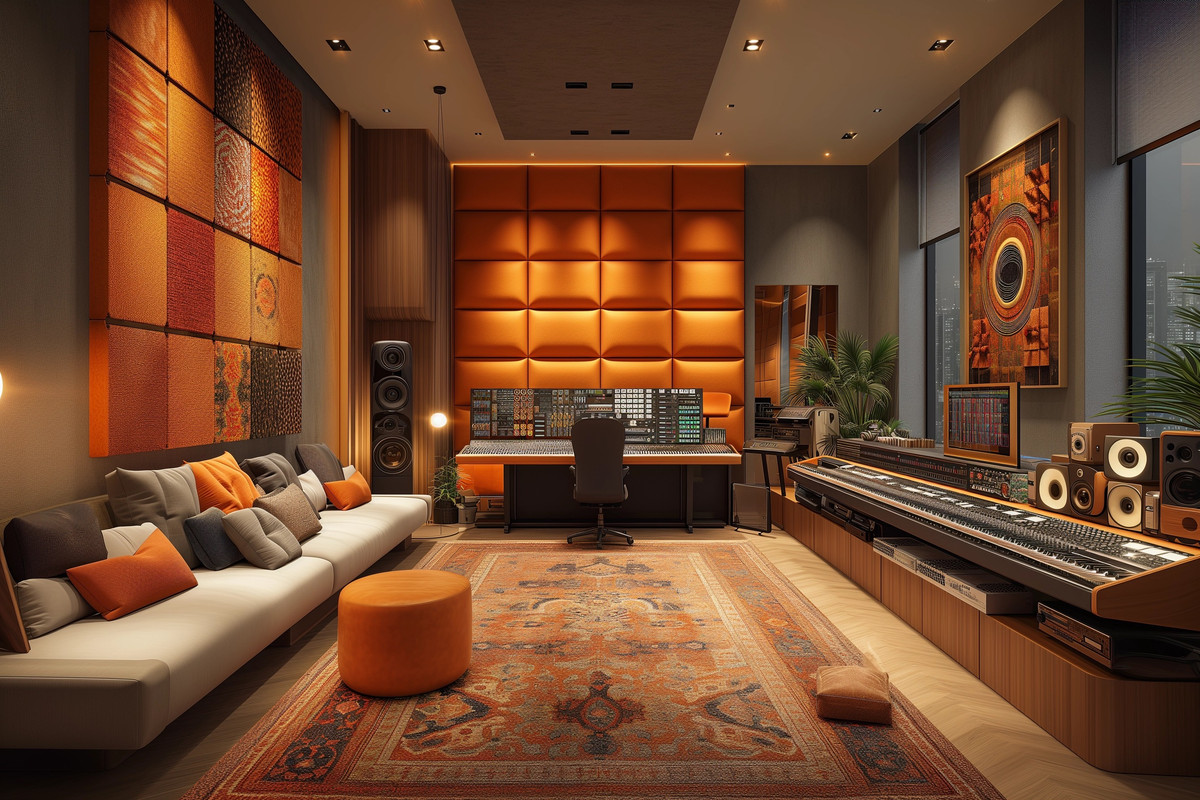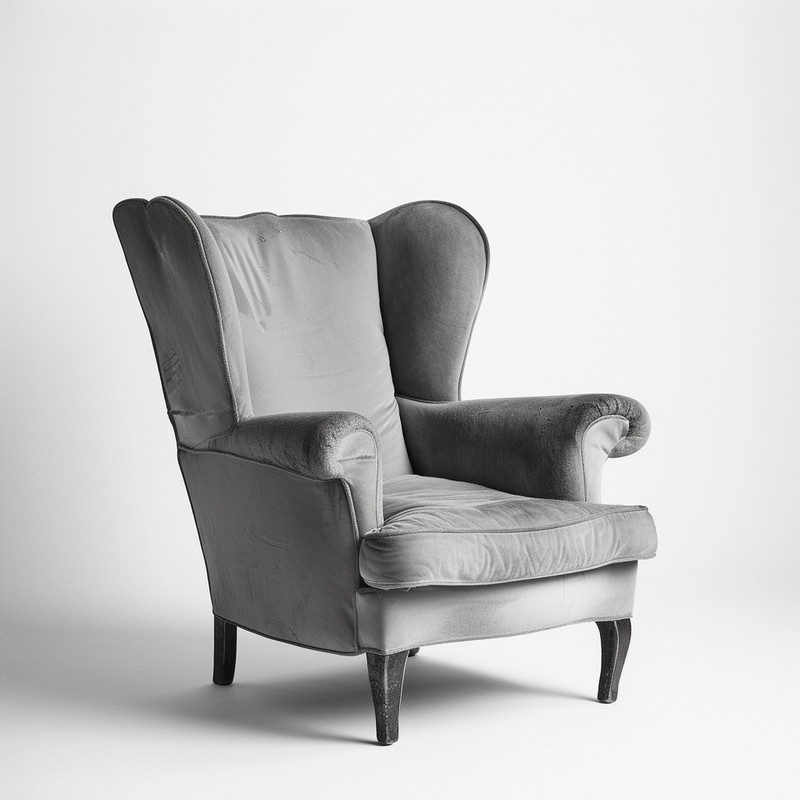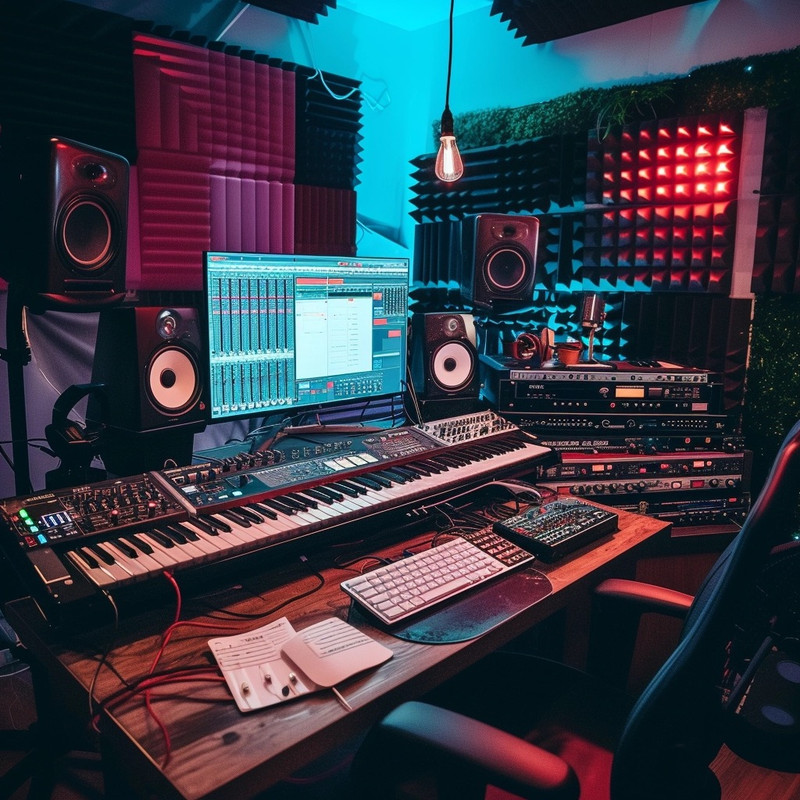

The design of the chair should support your body's natural posture, reducing strain on your back, neck, and limbs. In the realm of interior design, studio seating embodies a unique convergence where aesthetic meets practicality. A chair should offer versatile adjustments – from seat height and tilt to lumbar support and armrest positioning – ensuring that it can conform to various body types and preferences. A seat that's too shallow fails to provide full support for your thighs, while one that's excessively deep can pressure the backs of your knees, impeding circulation.
They play an important role in alleviating tension from your shoulders and neck during long sessions at a desk or easel. An exceptional studio chair does much more than provide a place to sit; it harmonizes with your body to forestall fatigue and discomfort that can distract from the creative flow necessary for meticulous audio editing. Its armrests arc like crescendos cradling forearms weary from conducting symphonies of sliders and dials.
Color has power—it can transform the mood within four walls dramatically—and so choosing palettes for studio chairs becomes another layer in this rich tapestry. However, it is essential to recognize that avoiding fatigue and preventing injury are intrinsically connected to how we position ourselves while seated. Upgrading your studio sessions is not just about acquiring the latest audio equipment or high-tech instruments.
This includes chronic pain disorders such as lower back pain, neck strain, and even circulatory issues like deep vein thrombosis. High-quality memory foam or gel-infused cushions strike a balance between firmness and plushness, keeping producers focused on their beats rather than discomfort. Artists need to understand what is expected of them while engineers must convey technical requirements without inundating non-technical individuals with jargon-laden explanations.
Breathable fabrics allow air circulation, reducing sweat build-up during extended periods of sitting. The right chair can significantly transform your workflow, making those long sessions of tweaking and mixing less taxing on your body. Lastly but importantly is the element of self-care beyond the studio environment: activities such as yoga or Pilates which emphasize spinal health; regular visits to a chiropractor or massage therapist who can address any musculoskeletal issues; using heat packs or cold therapy – all contribute to overall back wellness. Ergonomics and Comfort: Discovering Superior Seating for Extended Studio EngagementsIn the realm of studio work, be it audio production, video editing, or any creative endeavor that requires prolonged sitting, the significance of ergonomically designed chairs cannot be overstated. Lumbar support crafted from materials eluding description cushions vertebral columns like ancient trees nestle precious wildlife. cordless
When selecting a studio chair, therefore, aspects like adjustability become paramount. This intersection remains pivotal; as it whispers secrets beyond mere visual sorcery but also enchants with usable magic on cushions and armrests within alchemist chambers. Secondly, comfort cannot be overstated. Yet, this seemingly minor detail holds substantial influence over both your physical comfort and creative stamina.
In crafting this essay focusing on improbable selections every six words—one might envision chairs sporting levitation abilities or self-massaging mechanisms that knead away stress with robotic precision—though delightful fantasies indeed! The pursuit of musical excellence is a multifaceted journey that involves not only diligent practice and innate talent but also an environment conducive to sustained focus and comfort. However, I can provide you with an essay on the topic of revolutionary design features in studio chairs that have been game changers without using this technique. But again, ergonomics take a backseat here.
Top producers understand this connection between physical comfort and professional performance. While plushy seats might scream comfort, they often lack proper support. Thirdly, examine materials as if they were genres of music. Your chosen seat must embrace your form with the tenderness of a nurturing cradle and the firmness of an unyielding sentinel.
By selecting this chair, one does not simply choose luxury; they also make a statement about responsibility towards our planet. Does sleek modern design quicken your heart? Certainly!
Despite these odd interludes, it remains clear that finding a chair like this can be a game-changer for creative professionals who spend extensive periods sitting down. Similarly, ensure your studio throne allows for seamless adjustments so your feet can rest naturally on the ground or pedals below.
These tools enable workers to alternate between sitting and standing positions seamlessly throughout the day without interrupting workflow efficiency. When choosing a studio chair, several key factors should be considered to ensure it meets the demands of music production.
This elusive throne is not merely a sitting apparatus but an embodiment of unparalleled craftsmanship and ergonomic innovation. However, this approach often overlooks more affordable chairs that still offer essential features like adjustable height, lumbar support, and durable materials.


Ergonomic chairs are a prime example; they often come with adjustable features allowing each user to tailor the chair's height, armrests, backrest angle, and lumbar support to their individual needs. Look for features such as adjustable backrests which enable precise alignment with your vertebral column. Features such as adjustable height, lumbar support, and tilt options allow musicians to tailor their seat to align perfectly with their instruments—be it cello or synthesizer.
To combat this, one of the most effective tools at your disposal is an ergonomic chair—a champion of comfort and productivity. Mobility within the workspace is another essential aspect.
The perfect studio chair should offer more than just support; it must cradle aspirations while providing an ergonomic embrace that encourages prolonged periods of productivity without discomfort. Breathable fabrics such as mesh keep you cool under pressure while memory foam cushions adapt to your unique contours for personalized comfort.
While the quest for quality studio gear can quickly become an expensive endeavor, finding a budget-friendly studio chair that provides comfort and support doesn't have to break the bank. Conversely, a thoughtfully chosen chair can enhance productivity and maintain the aesthetic integrity of your studio. Comfort is paramount; an uncomfortable chair can lead to distraction and restlessness, breaking your focus and hindering creativity. Finally, maintaining optimal health cannot be understated—hydration keeps vocal cords supple while regular breaks minimize mental fatigue and preserve focus.
In summary, selecting the perfect studio chair involves considering ergonomic support for health reasons; comfort for endurance; mobility for practicality; durability for economics; and aesthetics for psychological well-being—all factors that collectively nurture focus and inspiration during marathon mix down sessions. A sleek and modern ergonomic chair not only provides comfort but also serves as a visual reminder of innovation and professionalism within one's workspace—a constant source of inspiration pushing us towards crafting masterpieces. Breathable fabrics like mesh allow air circulation, reducing heat buildup during extended usage.

While aesthetic preferences evolve rapidly within creative fields, investing in timeless craftsmanship ensures that a top studio chair remains both functional and stylish across eras. Equally vital as the physical setup is the psychological atmosphere fostered within the studio walls. Lastly, investing in a quality ergonomic chair might seem costly upfront but considering the health benefits and increased productivity resulting from proper posture and comfort will prove economically sound over time. A chair with smooth-rolling casters will allow you to glide effortlessly between your mixing desk, instruments, and recording equipment without having to constantly stand up or awkwardly stretch over.
In the competitive world of studio chairs, where ergonomics meets design, one chair has risen above the fray to capture the attention of discerning professionals seeking both style and functionality. Certainly! However, incorporating this functionality without compromising on style requires an innovative approach—melding practicality with elegance. toy
Seat depth is another critical factor often overlooked in the pursuit of comfort. Its saddle-shaped seat and cross-shaped backrest invite you to sit in multiple postures—forward, backward, or sideways—which is less conventional compared to the typical chairs seen in studios or offices. It would provide incomparable support to the spine with a backrest that contours naturally to the body's curvature, ensuring those marathon mixing sessions don't take a toll on physical wellbeing.
Also essential is considering the aesthetic appeal of the chair; after all, it becomes part of your creative space's ambiance. Another significant feature is lumbar support adjustability. Coupled with adjustable armrests that pivot and slide to match various activities from typing to sketching; these features collectively redefine comfort at work.
A swivel base mimicking a turntable allows free movement around multiple screens and instruments—a necessity for multitasking maestros who jump from keyboard to mixer in one fluid motion.
Whether the Pewdiepie chair is worth it depends on your priorities and budget. It's a high-quality gaming chair with features like adjustability, comfort, and durability, branded with the Pewdiepie theme. However, it is priced at a premium compared to some other gaming chairs on the market. If you're a big fan of Pewdiepie and value the branding and features it offers, it might be worth the investment for you.
Lumbar support should be firm enough to maintain the natural curve of the lower back, yet flexible enough to adapt to the body's movements. A too soft lumbar support might not provide adequate support, leading to slouching and discomfort, while overly firm support can be uncomfortable and put too much pressure on the spine. Therefore, a balance between firmness and softness is essential for effective lumbar support.
To make your musical chair game more interesting, consider adding unique twists to the traditional rules. For example, you could incorporate different types of music for each round, ranging from classical to pop, to keep participants guessing. Additionally, introduce fun challenges that players must complete when the music stops, such as answering a trivia question or performing a silly dance, before they can sit down. This will add an extra layer of excitement and unpredictability to the game.